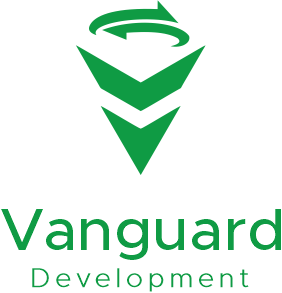Rethinking Financing: Innovative Solutions for Today’s Commercial Real Estate Market
The commercial real estate (CRE) landscape is rapidly evolving, with changing economic conditions, increased demand for sustainable development, and the rise of technology-driven projects. Traditional financing solutions—bank loans, mortgages, and lines of credit—no longer offer the flexibility and creativity needed to meet these new demands. As a result, developers and investors are exploring innovative financing solutions to bridge funding gaps, mitigate risk, and unlock new opportunities.
This guide delves into the cutting-edge financing solutions shaping the future of commercial real estate and offers insights on how these strategies can empower developers to rethink the way they fund and execute projects.
1. Crowdfunding and Syndicated Equity Investments
In an age where connectivity is everything, crowdfunding has transformed the way investors approach real estate. Real estate crowdfunding platforms allow developers to pool funds from multiple individual investors, democratizing access to CRE investments and broadening the investor base.
Advantages of Crowdfunding and Syndicated Equity:
- Broader Investor Pool: Allows smaller investors to participate in large-scale projects.
- Lower Barriers to Entry: Individual investors can join high-value projects without substantial capital.
- Enhanced Market Reach: Developers can quickly reach a large audience, especially for unique or community-driven projects.
Crowdfunding is especially popular for multifamily housing, urban redevelopments, and green spaces, where communities are keen on supporting local growth and sustainable initiatives. For developers, this approach can mean quicker funding with a built-in base of invested stakeholders.
2. Joint Venture (JV) Partnerships for Shared Success
Joint ventures are becoming a popular way to spread financial risk while increasing access to expertise, resources, and capital. In a JV, two or more entities combine their resources to finance a project, often involving a real estate developer and a capital-rich investor (such as a private equity firm or REIT). This structure enables developers to take on larger projects that might otherwise be out of reach.
Key Benefits of JV Partnerships:
- Risk Mitigation: Sharing financial risk helps both parties navigate economic uncertainties.
- Access to Specialized Expertise: Allows developers to work with seasoned investors or operators with industry insights.
- Scalability: Enables larger or multi-phase projects without over-leveraging debt.
For large-scale projects or those in high-demand markets, joint ventures offer a collaborative path to success, combining the strengths of all parties for sustainable growth.
3. Non-Recourse Loans for Liability Protection
For developers concerned with personal financial exposure, non-recourse loans have become a preferred alternative to traditional debt financing. In a non-recourse loan, the lender’s only recourse in case of a default is the property itself. This structure provides an appealing level of protection, as developers are not personally liable if the project fails.
Advantages of Non-Recourse Loans:
- Limited Personal Liability: Protects personal assets if the project underperforms.
- Attractive for High-Risk Projects: Appeals to developers pursuing high-reward but riskier developments.
- Long-Term Focus: Allows developers to focus on project success without immediate financial burdens.
While non-recourse loans often come with higher interest rates and stricter qualification criteria, they remain valuable for projects in emerging markets or innovative developments where traditional loans may be hard to secure.
4. Mezzanine Financing for Flexible, Short-Term Capital
Mezzanine financing offers a hybrid model that sits between debt and equity, allowing developers to access flexible funds without giving up full control. Mezzanine financing typically bridges the gap between senior debt and equity, often used to cover final phases of a project or unexpected expenses.
Benefits of Mezzanine Financing:
- No Immediate Equity Dilution: Developers retain primary control of the project while gaining additional funding.
- Quick Access to Capital: Ideal for short-term funding needs or unplanned project expenses.
- High Leverage: Complements senior debt and allows developers to maximize leverage without fully committing to equity financing.
While interest rates are often higher, mezzanine financing provides essential liquidity for real estate projects nearing completion, keeping projects on track and minimizing delays.
5. Green Bonds for Sustainable Projects
Sustainable development is no longer a trend but a priority for real estate investors and communities alike. Green bonds, specifically designed to finance environmentally-friendly projects, are attracting both developers and investors focused on sustainability.
Why Green Bonds Work for Developers:
- Lower Interest Rates: Many green bonds offer competitive interest rates, incentivizing developers to prioritize sustainable projects.
- Enhanced Appeal to ESG Investors: Attracts investors interested in environmental, social, and governance (ESG) principles.
- Positive Public Perception: Demonstrates a commitment to sustainability, building trust and value for future developments.
Green bonds are ideal for developments incorporating renewable energy, sustainable materials, and efficient building designs, creating win-win outcomes for the environment and investors.
6. Real Estate Investment Trusts (REITs) for Long-Term Funding
For developers looking to turn a project into a long-term, income-producing property, partnering with or creating a Real Estate Investment Trust (REIT) can be a viable solution. REITs pool capital from multiple investors and are structured to produce income through the property’s cash flow, making them a preferred vehicle for investors interested in stable returns.
How REITs Support Real Estate Development:
- Reliable Income Stream: REITs are often income-generating properties, creating a dependable revenue flow.
- Attracts Institutional Investors: With publicly traded options, REITs can attract a wide range of investors.
- Ideal for Large-Scale Projects: REITs suit projects that developers plan to hold and manage, such as retail centers or multi-family residences.
REITs provide a mechanism for developers to retain control and receive long-term revenue from their projects, helping them scale their business sustainably.
7. Opportunity Zone Funding for Tax Incentives
Opportunity Zones (OZs) are government-designated, economically-distressed areas that offer significant tax incentives to investors. Investors can defer, reduce, or even eliminate certain capital gains taxes by investing in OZs, making them an attractive option for both investors and developers aiming to support economic growth in underserved areas.
Key Benefits of Opportunity Zone Funding:
- Attractive Tax Benefits: Provides tax deferral and reduction, enhancing long-term ROI.
- Incentivizes Community Development: Drives investment into revitalizing underserved areas.
- Increases Investment Interest: The tax incentives draw a diverse range of investors to OZ projects.
Opportunity Zones align financial returns with social impact, supporting both community upliftment and commercial growth.
The Future of Commercial Real Estate Financing
The evolving needs of the commercial real estate sector call for flexible, innovative financing solutions that can adapt to economic changes, environmental considerations, and technological advances. Today’s developers are no longer confined to traditional funding structures, opening the door to new possibilities that align with their unique project visions.
As the commercial real estate market continues to shift, innovative financing options provide both developers and investors with the tools to bring visionary projects to life. By exploring these modern solutions—be it joint ventures, green bonds, or mezzanine financing—developers can move forward with confidence, knowing they have the resources to not only adapt to today’s landscape but also shape the future of real estate.


Leave A Comment